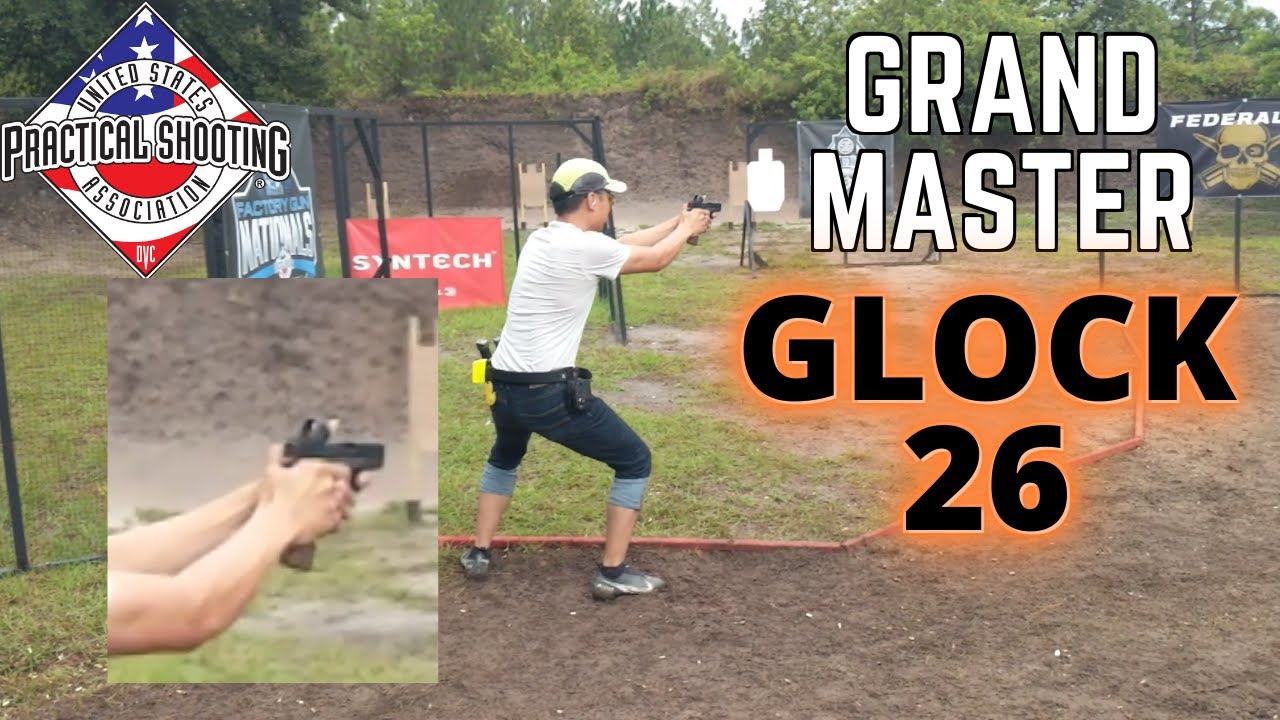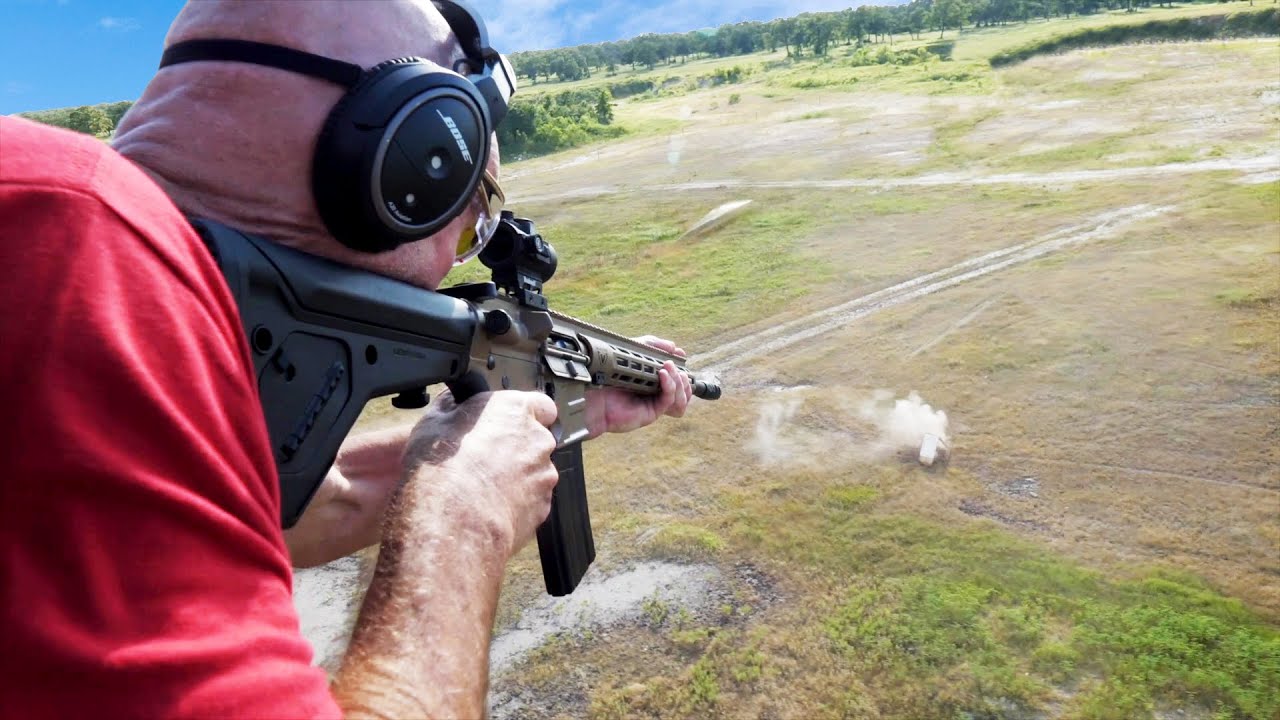Shooting with my kids this weekend, I stepped up to take some moving target shots and thought, OK Grip, Target acquisition, front sight, rear sight, stance, trigger press, breath, relax, track the target, Both eyes, how much time, head or body… Then it occurred to me, That’s Way Too Much, Way Over Thinking it, Way too much to put into a couple of seconds. I train all of those things, I think about them and practice them one by one. Then when the pressure is on I felt like my brains were just running around in circles, checking boxes in an unending list. So I went to, see the target, find the sight, fire 3 times, turn around and laugh with the kids when I missed. Maybe it’s just me but all of the stuff all of the “experts” tell me I must do every time to be able to handle a firearm and to defend myself is Too Much.
You’re on the right track but you are thinking to much. It takes many reps to develop what some call “muscle memory.”
Muscles don’t remember, but repetition develops new synapses between the brain and the muscles, essentially shortening the time it takes to perform a task without actually thinking about the various parts, whether ballet, figure skating, musical performance or shooting.
Motor skills are acquired through repetitive practice and eventually persist without additional reinforcement or, dare I say, conscious thought.
I don’t know if it is too much or not but get where you are coming from.
We have to train all the pieces to the point they become automatic or we will all be doing mental gymnastics when we should be shooting. Dry fire if you can do it can help with grip, stance, draw, etc. Just double and triple check to make sure gun is empty and ammo is locked up. I suggest not doing in front of your kids unless older. Hard to explain to young kids why you are violating safety rules.
I used to train religiously on defensive shooting. I really didn’t train for precision. I can shoot with both eyes open out to about 10 -15 yards and hit center mass. Basically point shooting. I tried shooting bowling pins for fun and struggled. I am now training for both. Single, dominant eye shooting for precision and distance shooting. Both eyes open for defensive shooting.
Defensive shooting is almost a reflex now. Precision shooting I have to do the mental check list like you.
Don’t stress about the check list from experts. Find what works for you, train hard and keep it fun.
It all begins in steps. I worked on one target and when I became efficient, I moved onto two targets. You build a house by starting with a foundation and build upon that foundation one step at a time. Practice and training will get you there.
This ![]()
We have the luxury of time during practice so we cover the basics, fundamentals, details that matter, with the goal that when needed, we would instinctively fall back on what we accumulated in our brain.
I was watching a video from a USPSA Grand Master, Tony Wong, in which he kind of addressed this. This is a guy that had a goal of becoming the best shooter in the world. He’s still not there but he became a Grand Master. I believe he achieved it in 2 years (quite fast). He also does not use any high end pistols or equipment. He competes with a pretty much stock Glock 26.
He talks about concentrating on speed over accuracy. This allowed him to get good (overall) very fast. He mentions that if you concentrate on accuracy as soon as you attempt to increase speed your accuracy suffers. So you keep getting your accuracy better at a faster speed, but as soon as you increase speed again, your accuracy suffers. You have to keep retraining the same things over and over. He concentrated on going as fast as he wanted, his accuracy was garbage, but as he kept going at that speed his accuracy got better and he did not have to retrain at each speed level. It’s a very interesting approach, and obviously it works. He also had to let go of ego, because he was garbage for a long period, but as soon as everything started clicking he made incredible gains.
Now, I’m not saying that this is the only way to do it, but it is a very interesting approach, because it is almost the complete opposite of what most would advise. You mentioned all these things you needed to do to hit your target, the checklist (creating analysis paralysis). Then moving targets come along and none of it works (you miss). Maybe a different approach is necessary.
Of course USPSA is a “game” and not the end all for shooting or self-defense, but I think the practice of getting on target, at the fastest speed, and with stress is a very good practice for what you’d have to accomplish on a self-defense encounter.
Here’s one video where he’s talking about his training regime, getting on target, and efficiency in shooting. It is a very interesting view from someone that has accomplished quite a lot, and did it in a very short time.
Here’s another interview that is also very illuminating
Good luck progressing through training. Hopefully this gets you a different perspective and a way to improve.
My approach, “just relax and fly the airplane”, Executive Decision, 1996
“Fast is fine, but accuracy is final. In a gun fight… You need to take your time in a hurry.”
- Wyatt Earp
I think of it as, the purpose of training is to focus on a small number of those things at a time, and through repetition, you no longer have to think about it
You may be hung up on the transition between conscious competence and letting go (insert jedi quote) for unconscious competence.
Still go back and focus on different things at different times for maintenance though
The only moving targets I do are swinging. I anticipate where it is going to stop and point there. When the target gets to that spot I do a double tap. If you calculate it right you can hit it coming and going. Don’t follow the target wait for it to come where you are aiming.
You got this.
That sounds like a fun exercise ![]()
However, based on shooting countless moving targets ranging from flying birds, running rabbits, swimming fish, etc., none of them have a predicted stop point nor sometimes no predictable path. If you point straight at them and pull the trigger you will miss. I remember visiting the USS Alabama destroyer in Mobile. Inside the turrets where the gunner(s) would be was painted in large letters “LEAD DAMN IT LEAD”, as a life saving reminder to shoot ahead of an enemy airplane rather than straight at it.
I don’t know how to easilly and economically replicate a moving bad guy at the range, but I don’t expect them to stop moving for me to take a shot in a real life self defense encounter. Hopefully someone here has some ideas.
I calculated the distances I would have to lead a coyote running at different distance, speed, and angle to me once. It was kind of vague but it gave me an idea. I just try not to shoot at moving animals.
As I was attempting to tell a guy once. Don’t run in a straight line, zigzag. If you get somebody that knows how to shoot, running in a straight line will get you killed.
And vary the length of your zigs and zags.
Otherwise, @Robert1246 can get anticipate your next move and double tap you.
“Serpentine, Shelly, serpentine!”
(Points if you can name the movie reference.)
One of the biggest problem that I see beginners make is waiting way too long to get tht 1st shot off. They are yrying so hard to hit the 10 that they don’t realize that there is a world of difference between target & defensive shooting. I know all about this because that was me 45 years ago
This video addressing “How to aim … while moving” was released less than a week ago. He provides a couple of easy and economical training exercises.
How To Aim A Pistol Or Rifle While Moving - YouTube
It is long, but I always enjoy watching this guys videos.
Moving targets? Switch to a shotgun.
Shooting a handgun at an advancing adversary is one thing, but shooting at a lateral moving target is going to take focus away from “backdrop”, which is incredibly important not to do.
Considered finding cover when an adversary is moving laterally.

